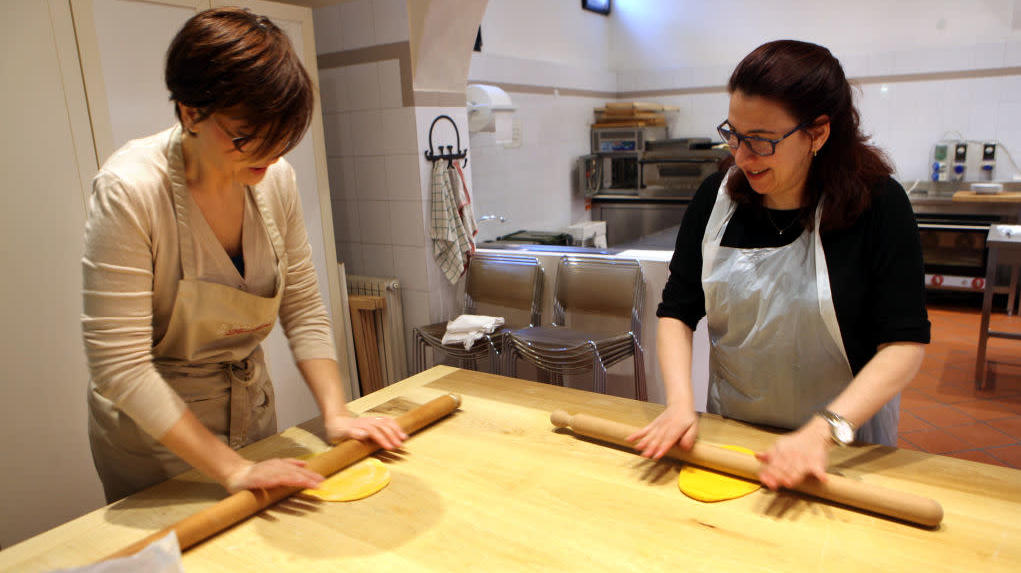It's Time To Accept That The French Do Rolling Pins Better Than We Do
When I was learning to cook, American rolling pins came in only one style: a wooden dowel that had a handle on either end. And, sure, it had its advantages. By holding onto the handle, you could whack at dough on a cutting board or pound on tough cuts of meat or keep your hands away from touching ingredients that might be sticky. But the gap between the handles and the pin always bothered me.
And I never could find a rolling pin with handles that felt comfortable in my hands. It wasn't for lack of choices: My mother had several sizes of pins in her drawer, including some with embossed squares that are used for making springerles, a German Christmas cookie. But the handles always tended to become loose and feel wobbly, which is the last thing you want when you're trying to master dough.
Then, when I went to Paris last decade to spend a once-in-a-lifetime week at a cooking class with Patricia Wells, my rolling pin world was transformed.
Wells told us that French bakers generally use long wooden rolling pins that do not have handles. They're simply smooth rounded cylinders of wood, sometimes a little tapered at the ends. Everybody in our class exclaimed over the French rolling pins, and we all rushed out to the famous cooking equipment store, E. Dehillerin, to buy them. Mine was 20 inches long, but, fortunately, it fit in my suitcase, and I put it into action as soon as I got home.
With a French rolling pin, you feel much closer to the action. Your hands become part of the rolling pin, and smoothing out dough becomes a more sensory experience. You can still use it as a tenderizer by grasping an end rather than a handle, and it's especially nice for crushing dried herbs. It's also easier to clean. You can wrap a wet paper towel or dish rag around it, and run it down the entire length.
Of course, like the playing cards in the Jack Berger story arc of Sex And The City, once I saw a French rolling pin, I started to see them everywhere.
A number of top American bakers have been turned on to one-piece rolling pins, including Dorie Greenspan. (Hers is made out of nylon, instead of wood, which isn't an avenue I've gone down yet.) While you might still have to search a little to find them, they've become a standard alternative to the old-fashioned American kind.
But it wasn't until I took another cooking class called "Sticky Fingers: Breakfast Buns" at the King Arthur Flour Baking School in Norwich, Vermont that I realized how much of a convert I had become.
When we got to our work stations to begin making our sticky buns and cinnamon rolls, the instructors provided us with old-school rolling pins with handles. There were a few concerned looks, although no one in the class would have been rude enough to speak up loudly. That isn't the New England way.
I figured I'd just have to get by with the American pin. But without a pin flowing directly beneath my fingers, I discovered I couldn't easily manage the dough. My rhythm was interrupted as I tried to keep a grip on the handles.
The instructors must have read our minds, because after our coffee break, they brought in an armful of French pins. Yes, I was among the home bakers rushing up front to get one.
If you're pondering whether to buy one, you should keep in mind that these pins are sometimes longer than conventional kitchen drawers, especially in older homes without designer kitchens. In one house where I lived, there wasn't enough clearance between the kitchen counter and the bottom of a cupboard so that I could store it in my crock of cooking utensils. I had to angle it into a drawer, which robbed me of the joy of showing it off.
But it's front and center where I live now: I've given it pride of place in the crock. Whenever I see it, I remember my Paris cooking class days, and I can't wait to use it again.
